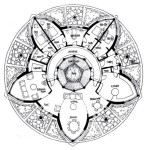Essential Aspects of Drawing Electrical House Plans
Drawing electrical house plans is a crucial step in any electrical installation project. It involves creating a detailed blueprint that outlines the location of electrical outlets, switches, lighting fixtures, and other components. Accurate and well-drawn electrical plans are essential for ensuring the safety and functionality of your electrical system.
Here are some key aspects to consider when drawing electrical house plans:
1. Scale and Measurements: The plan should be drawn to a recognizable scale to accurately reflect the actual dimensions of your home. Ensure to use correct measurements and label all distances and dimensions clearly.
2. Legend and Symbols: Use a standardized legend to indicate various electrical components, such as outlets, switches, and lighting fixtures. Ensure the symbols used are widely recognized and conform to industry standards.
3. Circuit Designation: Each electrical circuit should be clearly labeled and identified on the plan. This helps in tracing and troubleshooting electrical issues and ensures that circuits are properly balanced.
4. Outlet and Switch Placement: Electrical outlets and switches should be strategically placed to provide convenient access and avoid overcrowding. Consider the placement of furniture, appliances, and fixtures to determine the optimal locations for outlets and switches.
5. Lighting Layout: The lighting layout should be designed to provide adequate and appropriate lighting for various rooms and areas of the house. Consider the function of each room, the type of activities performed, and the desired ambiance when planning the lighting layout.
6. Labeling and Notes: Clearly label all electrical components, wires, and circuits on the plan. Include any additional notes or instructions that may be necessary for the installer or inspector.
7. Compliance with Codes: Ensure that the electrical plan complies with all applicable electrical codes and regulations. This includes meeting the required number of outlets, proper grounding, and circuit protection.
8. Review and Inspection Once the electrical plan is complete, it should be thoroughly reviewed by an experienced electrician or qualified inspector. They can check for errors, compliance with codes, and ensure the plan meets the specific requirements of your project.
By following these essential aspects, you can create accurate and comprehensive electrical house plans that will serve as a valuable roadmap for the safe and efficient installation of your electrical system. It is recommended to consult with a licensed electrician for professional assistance and to ensure that your electrical plans meet the specific requirements of your home.
Create An Electrical Plan Roomsketcher Help Center

Electrical Drawing Blueprints Plan Layout Floor

Free House Wiring Diagram Edrawmax

How To Draw An Electrical Plan With Roomsketcher

Electrical House Plan Details Engineering Discoveries Wiring Diagram Home

Typical Electrical Plan For A Small One Family House Image Was Scientific Diagram

Free House Wiring Diagram Edrawmax

Ground Floor Electrical Installation Plan Design Of Apartment House Drawing Cadbull

How To Read Electrical Plans

Draw Electrical Floor Plan Layout By Faizankhalid18 Fiverr








